|
|
TABLE OF CONTENTS:
1) General Discussion
2) An Armenian Site's Glorification
3) The Armenian-Nazi Collaboration in WWII
4) From Armenophile Christopher J. Walker
5) Hovannisian: Dro Not a Nazi
7) Armenian Nazi Tidbits, from an Unknown Writer
8) 30,000 or 100,000 Nazi Armenians?
9) Nazi-Armenian Co-operation in the Press
10) Nazi-Turkish LACK of Co-operation in the Press
This page will examine the Armenian enthusiasm for the Nazi cause. Many loved
the association from 1935 on, as Der Fuehrer continued to rise in power. This
appreciation stemmed in no small part from the Armenians' pride in being an
Indo-European, "Aryan" people.
|
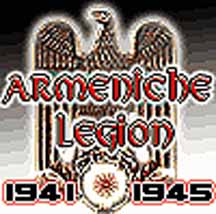
|
|
Armenians
got into Nazis earlier, in 1935;
The spelling should be "Armenische"
|
Naturally, not all Armenians were
sympathetic. Brave journalist Varian Fry, with the aid of fellow Americans in
Europe, saved two thousand Jews, for example. And many Soviet Armenians fought
against the Nazis, as Germany invaded the Soviet homeland in 1941.
There were also many Armenians in the
Caucasus region who joined the Nazis, hoping for Armenia to be freed from the
Soviet "yoke." But there were also Georgians and Azeris who did the
same, probably not realizing they would be substituting one tyrannical master
for another. These Armenians, as far as I'm concerned, are off the hook.
What this page hopes to spotlight are
the European Armenians, mainly the Dashnaks, who voluntarily joined
Hitler's massive machine of oppression. (Of course, there will be a crossover
with the Asian Armenians from Transcaucasia.)
Why is this important? Because a lot of
these Armenians, deemed not good enough for the front, were assigned backwater
duties to police occupied regions. That meant Nazi-Armenians had a good hand
in the carrying out of the Final Solution. The irony should not be lost upon
any genocide-minded individual who sanctimoniously and mindlessly equates the
Armenians' genocidal myth with the very real Holocaust.
============
Yet another historical fact: a fact that for years has been
deliberately forgotten, concealed, and wiped from memory — the fact of
Armenian-Nazi collaboration. A magazine called Mitteilungsblatt der
Deutsch-Armenischen Gesselschaft is the clearest and most definite proof
of this collaboration.
The magazine was first published in
Berlin in 1938 during Nazi rule of Germany and continued publication until
the end of 1944. Even the name of the magazine, which implies a declaration
of Armenian-Nazi cooperation, is attention-getting. This magazine, every
issue of which proves the collaboration, is historically important as
documentary evidence. It is a heap of writing that should be an admonition
to world opinion and to all mankind.
To give specific examples of actions; In
May 1935 the Armenians of Bucharest attacked the Jews of that city, while
the Greeks of Salonika attacked the Jews in the August of the same year.
During World War II, Armenian volunteers, under the wings of Hitler's
Germany, were used in rounding up Jews and other ''undesirables'' destined
for the Nazi concentration camps. The Armenians also published a
German-language magazine, with fascist and anti-Semitic tendencies,
supporting Nazi doctrines directed to the extermination of 'inferior' races
[1]. This is confirmed by Armenophile Christopher J. Walker,
who admits that the Armenians collaborated with the Nazis. According to him,
members of the Dashnak Party, then living in the occupied areas, including a
number of prominent persons, entertained pro-Axis sympathies.
A report in an American magazine went so
far as to claim that the Nazis had picked on the Dashnaktsutiun to do
fifth-column work, promising the party an autonomous state for its
cooperation. Walker goes on to claim that relations between the Nazis and
the Dashnaks living in the occupied areas were close and active.
On 30 December 1941 an Armenian battalion
was formed by a decision of the Army Command (Wehrmacht), known as the
'Armenian 812th Battalion'. It was commanded by Dro, and was made up of a
small number of committed recruits, and a larger number of Armenians. Early
on, the total number of recruits was 8,000; this number later grew to
20,000. The 812th Battalion was operational in Crimea and the North
Caucasus. (These are the dates and numbers given by Walker).
A year later, on 15 December 1942, an
Armenian National Council was granted official recognition by Alfred
Rosenberg, the German Minister of the occupied areas. The Council's
president was Professor Ardashes Abeghian, its vice-president Abraham
Giulkhandanian, and it numbered among its members Nzhdeh and Vahan Papazian.
From that date until the end of 1944 it published a weekly journal,
Armenien, edited by Viken Shant (the son of Levon), who also broadcast on
Radio Berlin.
The whole idea was to prove to the
Germans that the Armenians were 'Aryans'. With the aid of Dr. Paul Rohrbach,
they seemed to have achieved this as the Nazis did not persecute the
Armenians in the occupied lands [2]. "Members of the Dashnak party
living in the occupied areas, including a number of names famous from the
period of the republic, adopted a pro-Nazi stance." [2]
"Wholly opportunistic the Armenians
[see below] have been variously pro-Nazi,
pro-Russia, pro-Soviet Armenia, pro-Arab, pro-Jewish, as well as
anti-Jewish, anti-Zionist, anti-Communist, and anti-Soviet - whichever was
expedient." [3] Sources: [1] Turkkaya Ataov: Armenian Extermination of
the Jews and Muslims, 1984, p. 91. [2] C.J. Walker: _Armenia_ London, 1980,
pp. 356-8. [3] John Roy Carlson (Arthur Derounian), _Cairo to Damascus_
Alfred A. Knopf, New York, 1951, p. 438.
The preceding was published in a
guestbook of an Armenian web site, 1999-05-27 04:27:00; the author is unknown.
Carlson's direct quote for [3] had the word "Dashnaks" in place of
"Armenians." For the last century, unfortunately, the two have
proven to be interchangeable, for all intents and
purposes.
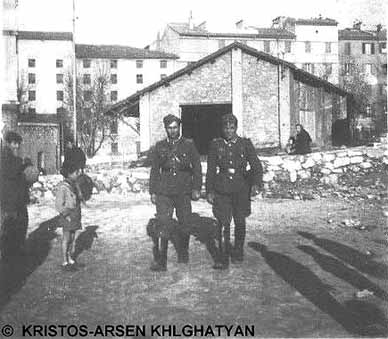
These Nazi-Armenians are said to be patrolling the
South of France, in 1943. This and other photos are probably from the private
collection of one of the two gentlemen featured above, whom I guess is named
Rubene Nadzharyan. Others are proudly featured on this page. (Thanks to reader M. Goze for giving the
heads up on this nice glimpse into Nazi-Armenia.) This shot is reproduced here
under Fair Use, for
furtherance of historical knowledge. Please get the permission of the
copyright owner, should you choose to make use of this photograph, or the
site's other exclusive ones.
Perusing through this site, with the aid of Russian
translation services, it's easy to see the 812th battalion, commanded by Dro,
was not restricted to operations in the Caucasus (as Christopher Walker wrote,
below). Nazi-Armenian battalions 812 and 809 were present in Europe (the
latter transferred near the end of 1943, the site claims, fighting gloriously
on the Caucasian front, and having the lowest rate of deserters. But if they
were such a crack unit, why were they transferred to Poland and the Ukraine,
as the site goes on to tell us, to fight against measly partisans?), and
finally were forced to fight Americans and their allies in the aftermath of
D-Day. Many Nazi-Armenians were quickly taken as prisoners, the site suggests.
The site claims the 812th, which came into being on
Feb. 1, 1943 and transferred to the Netherlands on March 10, 1943 (in contrast
to Walker's history, below) murdered many Germans and revolted. (Armenians
revolting? What, again?) The revolt was suppressed by early 1944, the
battalion was disbanded, only to be put together again, later. The Armenian
site appears to be emphasizing how Nazi-Armenians resisted the Nazis, for
example, playing a hand in the Dutch resistance, helping the Allies, and so
forth. Pretty convenient.
The site laments some 9,000 Caucasian Armenians were
slated for the Gulag, as traitors after the war, until the early 1950s, if I
understood. Compared to the population of what used to be Soviet Armenia,
that's a drop in the bucket. What about these
folks, who fought for Russia, were deported en masse, and still are exiled
in the 21st century?
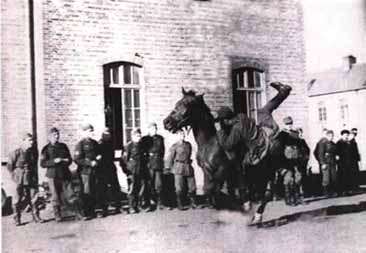
These Nazi-Armenian cavalrymen were horsing
around in the Netherlands, 1944. Some speculate Armenians were among those who
picked up Anne Frank and family, as one of the arresting Nazis was described
as dark skinned.
|
|
|
| The Armenian-Nazi Collaboration in WW II |
By: Ayhan Ozer
To validate a spurious genocide allegations, the
Armenians curry favor with the Jewish people, and manipulate the Holocaust tragedy to gain
some undeserved recognition from this uniquely Jewish experience. Historical evidences
point to a devious Armenian collusion with Hitler to exterminate the Jews during WW II.
Today, no matter how much the Armenians try to conceal this heinous episode from the
public knowledge the Armenian conspiracy with Hitler is in the history books —
indelibly. Soon it will be in the public conscience too.
In early 1930s, when Hitler ascended to power, he began cultivating the Armenians to use
their long-standing and strong anti-semitic feelings in his plans and policy. The
Armenians, through their publications, radio broadcasts and meetings supported and cheered
the Nazis on their attacks on Jews. Alfred Rosenberg, who was to become later Hitler's
Minister of the Occupied Territories, declared that the Armenians were Indo-European, or
Aryans, which honored them and put them in the same league with the Nazis. In Hitler's
foreign policy the Armenians fitted very nicely too. Hitler's future invasion plans of
Russia provided a golden opportunity for the Armenians to liberate what they considered to
be "Historic Armenia" from the Soviet as well as the Turkish rule.
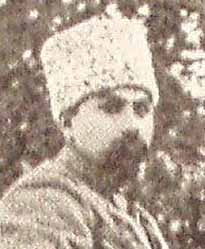 |
|
Mr. Dro, in
his pre-Nazi days
|
The short-lived Armenian Republic
established in 1918 in the southern Caucasus by the Armenian Revolutionary Federation (The
Dashnaks) was conquered by the Russian Bolsheviks in 1920, and ceased to exist. This time,
the Dashnaks saw a good opportunity in the collaboration with the Nazis to regain those
territories. To that end, on December 30, 1941 they formed a battalion of 8,000-strong
known as the "812th Armenian Battalion of Wehrmacht" under the command of Dro (Drastamat Kanayan), a
seasoned guerilla leader who had fought against the Turks in the Eastern Turkey before and
during the Turkish War of Independence following World War I. Later, he became the supreme
commandant of the Armenian army in the short lived Armenian Republic, and in 1920-1921 he
organized a wide-spread genocide against the Azeri and the Turkish populations in the
region. This is documented in the book World Alive by the U.S. Naval officer Robert Steed
Dunn who was an eye-witness to those Armenian atrocities.
Lieutenant Dunn was the Intelligence officer of Rear Admiral Mark L.
Bristol, the American High-Commissioner in the region and also a de facto American
Ambassador in Turkey. Between 1919-1921 Lieutenant Dunn travelled extensively with Dro and
his army in the region, and both made several contacts with the Russian Bolsheviks, the
Turkish and the Armenian National forces. With this historical perspective, this new task
assigned to Dro by the Nazi leadership after a quarter of century later seemed to be a
break to fulfill his dream of conquest.
This alliance alarmed Turkey and the Turkish Jews. The British Ambassador in Ankara
reported to London that "The Armenians [in Turkey] are extremely fruitful ground for
German activities, and these non-Muslim elements with their pre-Kemalist [i.e. Ottoman
period] mentality are always viewed with mistrust by the Turkish authorities."
(Public Record Office, Foreign Office document: F.O 371/ 30031/ R5337)
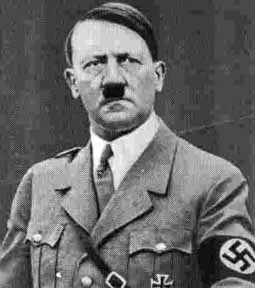 |
|
A good many
Armenians loved this man
|
This infamous 812th
Battalion later developed into a so-called "Armenian Legion" of 20,000-strong
with the efforts of Alfred Muradian, a German-Armenian, and by Armik Jamalian, the son of
the Arshak Jamalian, the Foreign Minister of the short-lived Armenian Republic. The troops
of this Legion were trained and led by the SS and its Security Division S.D., and they
joined the Nazi Einsatz Gruppen in the invasion of the Crimea and the North Caucasus.
These Armenian Battalions rendered valuable services to the Nazis as police units for
internal security duties in the occupied territories. It was their duties to round up the
Jews and the other "undesirable" elements, and organize the death marches to the
concentration camps.
|
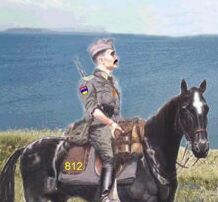
|
|
Nazi-Armenian
from Dro's 812th battalion
|
Pursuing those familiar utopic dreams, and shrewdly manipulated by the
Nazis, the Armenians foolishly tied their lot to Hitler, and praised him lavishly in the
Armenian-language daily Hairenik on September 17, 1936: "... and came [to power]
Adolph Hitler after herculean struggles. He spoke to the racial heart strings of the
German, opened the fountain of his national genius..."
Then, in August 19, 1936 the same daily Hairenik published the following:
"Sometimes it is difficult to eradicate these poisonous elements (the Jews) when they
have struck deep root like a chronic disease, and when it becomes necessary for a people
(the Nazis) to eradicate them in an uncommon method these attempts are regarded as
revolutionary. During a surgical operation the flow of blood is a natural thing. Under
such conditions dictatorship seems to have the role of a savior."
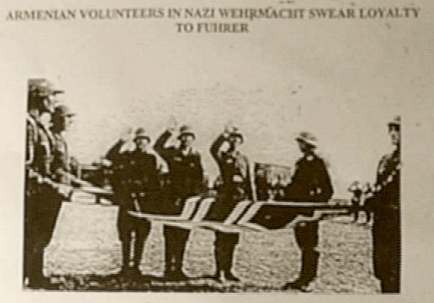
"Armenian Volunteers in Nazi
Wehrmacht Swear Loyalty to Fuhrer" (From the documentary "Sari Gelin."
Photos indicated to originally be from Nazi-Armenian journals.)
The daily Hairenik dated August 20 exposed the following bigotry:
"Jews being the most fanatical nationalists and race-worshippers, are compelled to
create an atmosphere of internationalism and world-citizenship in order to preserve their
race. As the British use battleships to occupy lands, the Jews use internationalism or
communism as a weapon..."
|
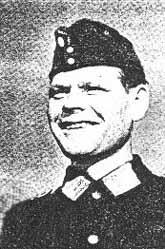
|
|
An Armenian
"gruppen-
fuehrer" (group leader) by the
name of Nazaryan ("of Razmik")
|
The September 25, 1936, Hairenik Weekly, an English
language organ of the Armenians (edited in Boston) denounced Zionist aims, and adopted a
strong anti-Jewish and pro-Arab view, and printed the following:
".. the type of Jews who are imported to Palestine is not anything to be proud about.
Their loose morals, and their vices... and on top of all, their communist activities were
the cause of most of the Arab criticism."
The August 9, 1935 issue of the Hairenik Weekly published a vitriol about "the Jewish
controlled film industry", then ascribed the massacres of the Jews by the Greeks and
Armenians in Salonica to the Jewish love of gain.
The May 10, 1935 issue of the Hairenik Weekly quoted the vice-Mayor of Bucharest, Romania
as saying: "The Armenians have helped us Romanians not to become slaves of the Jewish
elements." Romania was one of the foremost anti-Semitic country where the hatred for
the Jews reached hyperbolic dimensions.
Starting in the summer of 1942, a twenty-five year old Armenian by the name Suren
Begzadian Paikhar organized and led the Armenian National Socialist (Nazi) movement called
Hossank (Lightening), which gained a considerable following among Armenian youth in
German-occupied Europe and to some degree in Turkey too. On December 15, 1942, these
Armenian-Nazis and their supporters in Germany coalesced into the Armenian National
Council under the direction of professor Ardeshir Abegian, and the vice-president Abraham
Chulkandanian, and several old Dashnak guerillas, like Vahan Papazian and Karakin Nezhdeh,
who were the veterans of the Turkish wars in the Eastern Anatolia after the World War I.
Blessed by Alfred Rosenberg, this organization spew forth anti-Semitic and racist
vituperations through the broadcasts of the Radio Berlin, and their weekly journal
Armenian, published until the end of 1944, and edited by Viken Shant, son of the another
well-known Dashnak leader Levon Shant. Suren Begzadian Paikhar and some Hossank followers
worked as commentators/ announcers in the French and Armenian radio services of the Nazi
Ministry of Propaganda under Goebbels. In those programs Paikhar was usually introduced as
the Fuhrer of the Armenian people. (Patrik von zur Muhlen, Zwischen Hakenkreuz und
Sowjetstern - Dusseldorf, Droste, 1971, pp. 105-106)
The Armenian general Karekin Nezhdeh also founded the racist Armenian Tseghagron movement,
through which the Armenian youths flocked to the SS and the other elite Nazi military
forces. (Karekin Nazhdeh by James Mandalian - The Armenian Review I, 1958)
Other Armenians living in France and Germany joined the 58th Panzer Corps, and the
Ostlegion of the Wehrmacht's 19th Army, based in Lyon, France. The Dashnaks and the
Hossank Armenian-Nazis worked closely with Admiral Canaris, who was the chief of the the
German Military Intelligence (Abwehr), and his principal agent Hans Pickenbrock, the chief
of the Branch No: 1, who was in charge of spying to obtain military information, as well
as with Dr. Paul Leverkuhn, a key agent in Istanbul and the Director of the Istanbul
Substation (KO-Nebenstelle) of the "War Organization Middle East"
(Kriegsorganisation Naher Osten) from July 1941 until August 1944. This organization
administered a major Nazi intelligence network, not only in Turkey but throughout the
Middle East. The Armenian nationalists actively worked in those Nazi organizations to hunt
down the Jews, and cooperated with Reichspropagandaleiter in spreading the Nazi propaganda
in Turkey and in the Middle East. In these efforts they enlisted the support of the Grand
Mufti of Jerusalem, who was a close ally of Hitler.
During the early years of World War II, Germany was sweeping through the Western Europe,
and all the prognosis for the outcome of the war were in favor of Germany. As the Armenian
ethics always dictate fawning on the victor, they calculated — or, miscalculated —
that it was about time to commit themselves entirely to Hitler's victory. They summarily
formed a "provisional" Armenian government as a dress rehearsal for their
soon-to-be-realized aspirations. However, in 1943 the fate of the war began shifting from
Hitler to the Allies. The Armenians, the perennial political chameleons, summarily
renounced their allegiance to Germany, and did an about-face, this time groveling before
the Allies.
|
From
Armenophile Christopher J. Walker
|
 |
|
If one
can't trust Mr. Walker, whom can you?
|
"...Nevertheless
there remains the incontestable fact that relations between the Nazis and Daschnaks
living in occupied areas were close and active. On 30 december 1941 an Armenian
batallion was created by a decision of the Wehrmacht, known as the Armenian 812th
Battalion. It was commanded by Dro, and was made up of a small number of committed
recruits, and a larger number of Armenians from the prisoners of war taken by the
Nazis in their sweep eastwards. Early on the total number was 8000; this number
later grew to 20,000. The 812 th Batallion was operational in the Crimea and the
North Caucasus. A year later, on 15 December 1942, an Armenian National Council was
granted official recognition by Alfred Rosenberg, the German minister of the
occupied areas. The Council president was Professor Ardasher Abeghian, its
vice-president Abraham Guilkhandanian and it numbered among its members Nzhdeh and
Vahan Papazian. From that date until thje end of 1944 it published a weekly journal,
Armenian, edited by Viken Shantn (the son of Levon) who also broadcast on Radio
Berlin... What was the motive for the collaboration in the occupied areas ? It is
possible to see it as a purely vengeful desire to retake Armenia from the
Bolsheviks..... There is in the untutored mind a tendency to class Armenians and
Jews together (offensive to both peoples); and the malevolent paranoia of the Nazis
might have manifested itself against Armenians as well as Jews. Hence it was
important to prove to the Nazis that the Armenians were Aryans. With the aid of Dr.
Paul Rohrbach they seem to have achieved this. The Nazis did not persecute
Armenians, just for being Armenians, in the occupied lands..."
The preceding is from Christopher J. Walker's "Armenia
—The Survival of a Nation," page 357, para 2.
Prof. Richard Hovannisian:
"(Dro) was not a
Nazi"
In "Armenian
hero's wish is honored" (Boston Herald; Boston, Mass.; May 4, 2000;
Jules Crittenden), Prof. Hovannisian actually denied Dro was a Nazi.
"He remains an idealized
figure," Hovannisian was also quoted as saying about the mass murderer.
"His main concern was the support and rescue of the Armenian
people."
The article reports Robert
Najarian of the General Dro Memorial Committee (in Armenian-friendly
Massachusetts) as saying if Dro were not successful in defeating the Turks
("in a decisive battle at Bash Abaran in 1918, stopping what Armenians
say was a systematic effort to destroy the Armenian people," as the
article reports elsewhere) there would be "a good chance many of us would
not be alive today."
Uhhhh... but I thought the
"genocide" covered the years 1915-1916. If Dro engaged in his
blood-spilling during 1918 ("In the brief First Republic of Armenia from
1918 to 1920, he served as minister of war"), what exactly was Dro
rescuing the Armenian people from?
These were, after all, the years
when the Ottoman Empire was gutted, and the Armenians who were in charge of
Ottoman lands were busily massacring Turkish villagers. These were the years
when Armenia felt free to wage war against neighbors Georgia and Azerbaijan.
"After the Turks and Soviet
Russians invaded again in 1920 and divided Armenia between them, Dro fled to
Romania, where he lived until the end of World War II." The article sure
makes poor little Armenia out to be a victim, doesn't it? The fact of the
matter is the well armed Armenian military was preparing its own attack
against Turkey, but was caught with her pants down when Ataturk's forces first
attacked the Armenians, instead of the invading Greeks to the west. According
to the first prime
minister of Armenia and American
officers who accompanied Dro, the cowardly Armenians simply would not
fight. And the Armenians then willingly hooked up with the Soviets.
Where was the Armenian
"hero" Dro during this decisive period, the general who proved so
effective in mass-murdering unarmed Turkish women and children? The hero
bravely "fled to Romania, where he lived until the end of World War II...
After the war, Dro lived in Beirut and then Watertown, remaining active as an
Armenian nationalist until his death in 1956."
Leave it to Richard Hovannisian
to give an accurate portrayal of the facts, as usual.
The Boston Herald
gushingly devoted ten one-sided articles to this notorious killer of innocents
and Nazi war criminal in only one month (May) of 2000, all written by Jules
Crittenden.
Someone beat
Prof. Hovannisian to the punch with the "Denial" of Dro's Nazi
past... and that was Dro himself, after WWII was over. (You know, after
it was no longer fashionable to proclaim oneself a Nazi!) John Roy Carlson
(Arthur Derounian) knew better, as he relates in this "Armenian
Affairs" article
from 1949.
|
|
| Armenian Nazi Tidbits, from an Unknown Writer |
Altogether 30,000 Nazi Armenians served in various units in
the German Wehrmacht, according to Ara J. Berkian. 14,000
in predominantly Armenian army units, 6,000 in German army
units, 8,000 in various working units and 2,000 in the
Waffen-SS.[1]
addendum:
30,000, or 100,000?
 |
|
Samuel
Weems
|
Sam Weems was working on a
book on this very topic, part of his "Great Deception" series, before his
untimely death. In the documentary "Sari Gelin," he stated:
"...Hitler's famous quote, 'Who remembers the Armenians.'
Well, I can tell you exactly who remembered the Armenians, it was Hitler. I'm
about halfway through the next book in my series I'm doing, my working title is 'Hitler's
Armenian Nazis.' And there were over 100,000 of them, volunteers,
starting in 1935, to fight for Aryan purity, with the Nazis. They even had a radio
broadcast from Berlin once a week, and there were over five hundred of them. They
had newspapers. So when you come up with a fake document which nobody can really
verify that showed up like, Well, Hitler said this... Hitler also remembered the
Armenians, and when he proclaimed them, in 1943, to be Aryan-pure, just like the
Germans [were], and it was the Armenians that lobbied Hitler to declare them to be
Aryan-pure. And when you look at Armenia today, it is Aryan-pure, it's over 95% pure
Armenian; they've driven everybody else out, and the law... if you're a minority,
you can't even hold public office in Armenia... so they got to know their
partners-in-crime well... from 1935 to 1945, for ten years, and they're practicing
it today. So, yeah, Hitler remembered the [Armenians], they were his partners. And I
think that needs to be told."
|
A number of these Nazi Armenians were volunteers from France and
Greece who had chosen to commit themselves to the extermination of the European Jewry.
Derounian says that
_Nazi Armenians from France bore the mark 'Legion Armenienne.'_[2]
That Nazi Armenians like Dro 'the Butcher', Armenian architect
of the genocide of 2.5 million Muslim people, and Nezhdeh sided
with the Germans probably had an impact on the decision of
Armenians who overwhelmingly opted for armed service.
[1] Enno Meyer, A. J. Berkian, _Zwischen Rhein und Arax, 900
Jahre Deutsch-Armenische beziehungen_ (Heinz Holzberg
Verlag-Oldenburg 1988), pp. 118/119.
[2] John Roy Carlson (Arthur Derounian), ibid., p. 19.
!["Above: Armenians in Paul [Leverk??'s] staff visit Nazi Propaganda Minister Joseph Paul Goebbels before returning to Middle East to spread Nazi propaganda from [base?] at (Adana?)"](pics/Nazi-Sari-31.jpg)
Let's see if we can make out that caption: "Above:
Armenians in Paul [Leverkuen's] staff visit Nazi Propaganda Minister Joseph Paul Goebbels
before returning to Middle East to spread Nazi propaganda from [base] at [Adana]"
(From the documentary "Sari Gelin")
In fall 1942, the Armenian infantry battalions 808 and 809 were formed, to be followed by
battalions 810, 812 and 813 in spring 1943. In the second half of 1943 infantry battalions
814, 815 and 816 were created. These battalions together with other indigenous Caucasian
units were attached to the infantry division 162. Also attached to ID 162 were the field
battalions II/9, I/125 and I/198 which were formed between May 1942 and May 1943.
Altogether twelve Armenian battalions served the Nazi army, if battalion II/73, which was
not employed at any time, is to be included.[1] Most battalions were commanded by Nazi
Armenian officers. Armenians wore German uniforms with an armband in the Dashnag colours
red-blue-orange and the inscription _Armenien._
[1] Joachim Hoffmann, _Dies Ostlegionen 1941-1943, Turkotataren, Kaukasier und Wolgafinned
im deutschen Heer_ (Verlag Rombach Freiburg 1976), p. 172.
The Armenian SS unit was formed following a directive of Himmler in the beginning of
December 1944.[1] The Armenian Liaison Staff actively recruited volunteers[2] and by
February 1945 a cavalry formation of twenty thousand Armenians was integrated into the
larger Caucasian Waffen-SS unit. The Armenian SS formation was employed last in
Klagenfurt.[3] In addition to this exclusively Armenian unit, Nazi Armenians also served
in the thirty eight other SS divisions, one of them even in the elite _Leibstandarte Adolf
Hitler._[4]
[1] Meyer, Berkian, ibid., pp. 136-137.
[2] United States National Archives, T-175, Roll 167, pp 2700157/2700158, SS-Headquarters,
Amtsgruppe D - Oststelle,
see _Documents 3 and 4._
[3] Georg Tessin, _Verbaende und Truppen der deutschen Wehrmacht und Waffen-SS im zweiten
Weltkrieg 1939-1945,_ (Frankfurt am Main 1965-1980), Volume 14, Armenian Legion/Waffen SS.
[4] Meyer, Berkian, ibid., p. 119.
Derounian says that
"Greece was honeycombed with Armenians serving as Nazi spies." [1]
Many Nazi Armenians were arrested by the British and sentenced by the Greek government as
collaborators in espionage.[2] In Rumania many Nazi Armenians were found in Antonescu's
Iron Guard during arrest of members after the war. Bulgaria was the operational base of
Tzeghagrons-founder Garagin Nezhdeh, who commanded a network of espionage from there.
[1] John Roy Carlson (Arthur Derounian), ibid., p. 20.
[2] Meyer, Berkian, ibid., p. 150.
In Russia General Dro (the Butcher), the architect of the Muslim
Holocaust in ex-Soviet/Russian Armenia and Eastern Anatolia, was
working closely with the German Secret Service. He entered the war zone with his own men
and acquired important intelligence about the Soviets. His experience with the Muslim
Holocaust in ex-Soviet/Russian Armenia and Eastern Anatolia made him an invaluable source
for the Germans.[1]
[1] Meyer, Berkian, ibid., p. 113; Patrick von zur Muehlen,
ibid., p. 84.
Numerous articles in major newspapers (London Times) and periodicals (Newsweek) during the
war, had suggested the existence of a significant collaboration between Armenians and the
Nazis. Arthur Derounian deserves credit for being the first person to deal with this issue
extensively. Derounian's motives were twofold: his deeply held democratic convictions gave
him a sense of duty and he felt obliged to shed light on this yet another dark chapter of
Armenian history. Concurrently, Derounian embarked on what one would call "crisis
control" or face-saving. In order to forestall any potential attacks on the larger
Armenian community in the United States, he marginalized collaboration as deplorable but
insignificant.[1]
[1] John Roy Carlson (real name Arthur Derounian), _The Plotters_
E. P. Dutton & Company, Inc., New York 1946, p. 182.
Also, it is not surprising that the Armenians collaborated with the Nazis.
"Wholly opportunistic the Armenians [Derounian used the word
"Dashnaks" here, and not "Armenians" - Holdwater] have been
variously pro-Nazi, pro-Russia, pro-Soviet Armenia, pro-Arab, pro-Jewish, as well as
anti-Jewish, anti-Zionist, anti-Communist, and anti-Soviet - whichever was
expedient." [1]
[1] John Roy Carlson (Arthur Derounian), Cairo to Damascus
Alfred A. Knopf, New York, 1951, p. 438.
-----------------------
|
Nazi-Armenian
Co-operation in the Press
|
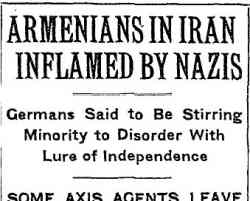
Armenians in Iran Inflamed by
Nazis
Germans Said to Be Stirring Minority to Disorder With Lure of Independence
SOME AXIS AGENTS LEAVE
But 'Shuttle' Plan is Hinted as 'Tourists' From Turkey Take Vacated Places
By RAY BLOCK
Special Broadcast to THE NEW YORK TIMES
ANKARA, Turkey, July 23 — German agents operating in Teheran are attempting to
foment disorders and inflame the Armenian population to sabotage and revolt against
the present Iranian government, promising money now and territory later for
"Greater Armenia" after the war, according to disclosures by high foreign
diplomatic sources here today.
Armenian irredentists are receiving promises of an independent Armenia composed of
Azerbaijan and bits of former Armenia in Iran, it is learned on the most reliable
authority, from German agents operating from headquarters at Tabriz and Teheran.
Tabriz is not an Armenian center, but the city serves the Germans best as
headquarters for paymasters, who provide the funds for the propaganda and for
Armenian terrorists. The latter are being instructed in the creation of disorders
and frontier incidents, such as the one that occurred five days ago on the
Syrian-Turkish border.
Nazis Foment Trouble
As previously reported, twelve to fifteen Armenian irregulars, armed with Vichy
rifles and submachine guns, attacked the Turkish frontier garrison at Andivar, south
of Gizre at the juncture of the Syrian, Turkish and Iraqi frontiers. The Armenians
were driven off by the Turks after brief but bitter fighting.
German agents, it is learned, found fertile ground among the Armenians of Syria
before the Allied campaign in the Levant started in early June. Fawzi el Kaougji,
the Arab agent paid by the Reich to foment disorder in Palestine, Syria and Iraq, is
said to be working across the Iraqi-Iran frontier smuggling guns and literature in
three or four languages to Armenians in Iran.
British diplomats in Teheran, it is understood, have sought to exert pressure on the
Iranian government to expel some of the several thousand German tourists, commercial
travelers and business men now moving in considerable freedom about the country.
British diplomatic sources here report that some Axis families have left Iran and
unconfirmed reports from Istanbul tonight said more than 200 Germans had left Iran
recently. It is known that Rashid Alial Gailani, who started the Iraqi coup d'état
and was defeated by the British in the recent Iraqi war, is en route to Turkey from
Teheran.
A Familiar Infiltration
Rashid Ali is expected to rejoin his family at Ankara and proceed to Istanbul to
establish an indefinite residence. Some Germans, however, have entered Tabriz and
this correspondent, who witnessed the inflitration of German "skiing
parties," sportsmen, tourists and business men into Hungary and Rumania, and an
attempted infiltration into Yugoslavia, can report that there is a considerable
resemblance in the appearance of traveleres and the technique employed.
Indeed, some of the same faces seen in Budapest, Bucharest and Belgrade — before
the Yugoslav Government overthrew the pro-German Cvetkovitch government — have
been seen in the last few days in Istanbul and Ankara hotels. These Germans carry
passports with Iranian visas. They wear the familiar German sports costumes of cheap
tweeds with elastic-belted coats, and all of them seem to spend money freely in the
cafes and restaurants of Ankara and Istanbul.
The infiltration appears to be working on the shuttle system. As rapidly as a
German's residence permit expires in Iran, he packs and leaves, frequently turning
over his hotel reservation to his broad-shouldered, blond young successor.
Nazis Accuse British
German sources in Istanbul and Ankara, before the departure for the Summer holidays
of Ambassador Franz von Papen and most of the diplomats from Ankara to the cooler
coastal resorts, circulated reports that a large British Army was being concentrated
in Iraq along the Iranian border, followed by thinly veiled accusations that Britain
had aggressive intentions against Teheran.
The British are making no secret of the reinforcement of their positions in the
Middle and Far East, all the way from Burma to Egypt. The British insist, however,
that these activities are preventive and defensive, pointing out, for instance, that
they have everything to gain — including Iranian oil — from continued quiet in
Iran, and a great deal to lose if Iran is involved in the war.
The Turkish Government is keenly interested in this situation and Ankara is
maintaining a sharp watch over developments at Teheran and Tabriz. The names and the
actual intentions of most of the Germans moving in and out of Iran are well known to
the Turkish authorities, who keep all suspicious foreigners under close
surveillance.
The New York Times, July 24, 1941, p. 4
|
| Nazi-Turkish LACK of Co-operation in the Press |
TURKS ACT TO CURB NAZI PROPAGANDA
Agent of German Arms Plants, Friend of von Papen, Held on Charge of Espionage
BETTER RELATIONS SOUGHT
Ribbentrop sends an Aide to Reorganize Publicity, but His Mission Is Seen as Doomed
Special Cable to THE NEW YORK TIMES.
ISTANBUL,
Turkey, Sept. 13 —Turkey is beginning to pay serious attention to the incessant German
propaganda, intrigues and espionage. The latest indication is the news that a close friend
of Franz von Papen, the German envoy, Kurt Hitzigrath, agent of German warplane and
munitions industries, who has been living in Istanbul for twenty years, has been arrested
on a charge of espionage.
It is only a few weeks since the head of the German propaganda bookshop here was arrested
on the nominal charge of selling publications insulting to the Turkish nation, but there
is reason to believe that his activities were of a more serious character.
It is likely that the activities of Germans in Istanbul whose obstensible occupations are
often only a cover for their real activities. It is probable that Herr von Papen's visit
to Shukra Saracaoglu, Turkish Foreign Minister, was not unconnected with Herr Hitzigrath's
arrest, although it was obstensibly to give assurances that Germany does not cherish
designs on the Straits, or against Turkey generally, and does not object to the treaty
with Britain.
This week three important Istanbul newspapers were suppressed for a week and a periodical
for an indefinite time period. Recently, the leading newspaper Cumhuriet was suppressed
indefinitely because it was attempting pro-Germna propaganda. It is unknown whether
similar suspicions are behind the new suspensions or whether the reason was the
unauthorized publication of the fact of Herr von Papen's visit to Mr. Saracoglu or some
exaggerated account of recent difficulties in the Istanbul bread supply.
Propaganda Among Armenians
The propaganda carried on by secret agents largely works among the Armenians. An effort is
made to arouse the traditional hostility to the Turks, and they are told that if Turkey
falls under German influence the Jews will be hounded out of all business and it will fall
into the hands of the Armenians. A story is also spread by German secret agents among the
Czech and Polish emigres to pin their faith on Italy, who will see their countries
revived[?] after the war.
With the collapse of France German propaganda became violent, seeking to force Turkey to
abandon the British alliance and simultaneously trying to drag in the Soviet Union by the
publication of the sixth German White Book alleging that Turkey desired to enter the war
in order to attack Russia, a charge that later was admitted to be false.
Six weeks ago Foreign Minister Joachim von Ribbentrop sent a personal friend, said to be a
high functionary in the Elite Guards, J. Sailer, as a special attache to the German
Embassy to reorganize German propaganda here. Herr Sailer began by calling leading Turkish
editors and assuring them in honeyed terms of his desire to improve relations. Though he
may have won over the Cumhuriet, he seems to have had a discouraging reception with the
other newspapers.
Herr Sailer was told that Germany's best hope to lessen the Turkish people's dislike of
Nazism was to cease propaganda entirely. One leading publicist declared:
"I have countless German friends; we sympathize with German efforts to escape the
bonds of Versailles, but from the moment of the seizure of Czecho-Slovakia we realized
Herr Hitler's aims and regulated our policy accordingly. Your mission is doomed to failure
because so long as Herr Hitler dictates Germany's policy it will be that of Mein Kampf,
which is a peril to the entire world."
The New York Times, September 14, 1940
(Thanks to Pinar)
-----------------------
Outside Reading:
An Armenian forum claiming the Swastika for their
own:
http://www.usanogh.com/articles/article.php?story_id=68
|
|